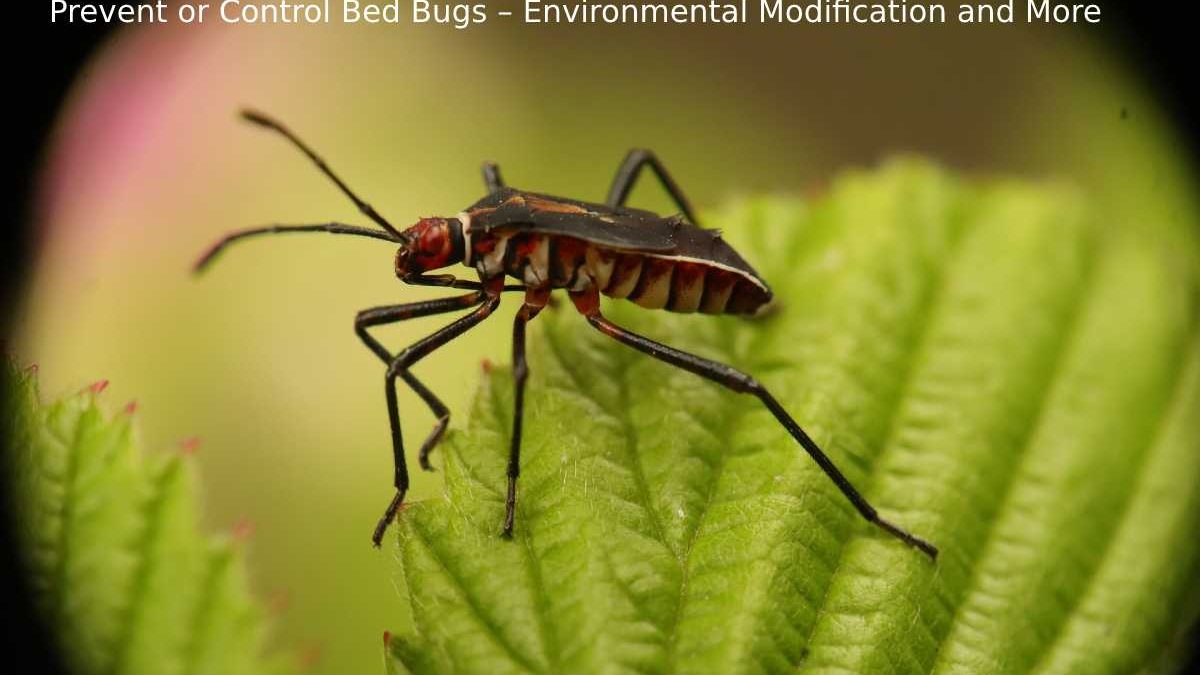Table of Contents
Prevent or Control Bed Bugs
Prevent or Control Bed Bugs: Bed bugs are tiny parasites seeking sleeping people or animals for a blood meal.
They are drawn to your exhaled CO2, body heat, and scent. Following feeding, they hide. It is challenging, but not impossible, to prevent, detect, and manage bed bugs.
Bed Bug Control Using Integrated Pest Management
In most instances, pesticides alone are insufficient to eradicate bed bugs. Implementing Integrated Pest Management (IPM) is necessary for effective bed bug control.
IPM is a globally friendly approach to pest management that relies on knowledge of the pest and a combination of common sense practices.
Such as inspection, monitoring, reducing clutter, sealing cracks, using barriers, non-chemical methods, and the judicious and careful application of pesticides when necessary.
1. Environmental Modification
Vacuuming reduces the population of bed bugs. Daily cleaning and vacuuming of bed bug-prone areas. Seal and dispose of the vacuum bag immediately.
- Install mattress and box spring encasements.
- Make the bed an island by keeping it away from the wall and off the floor.
- Install bed bug interceptors under the legs of the bed and furniture.
- Eliminate spaces where bed bugs can hide.
- Keep apparel off the floor.
- Isolate-infested items in plastic bags or containers with tight seals.
- Fill in crevices where bedbugs may hide.
If you live in an apartment or other multifamily dwelling and discover a bed bug, you should immediately contact your landlord.
2. Non-Chemical Measures
- Using specialized equipment, items that cannot be washed or dried can be steamed, heated, or frozen.
- Using a thermostat or space heater to increase the indoor temperature will not kill the bed bugs.
- Regularly launder sheets and clothing. Dry for 30 minutes at maximum temperature.
- Small items should be frozen for four days.
- Use steam to treat infested furniture.
- Eliminate highly infested items.
- Additional techniques available to professionals: Place items in temperature-controlled chambers to eliminate bed bugs.
3. Monitoring
- Examine the bed and sofa visually.
- However, place interceptors under the legs of the bed and sofa. Interceptors must be examined every 1 to 2 weeks.
4. Insecticide Treatments
The insecticide Diatomaceous Earth (DE) is a naturally occurring, white powder-like substance. Bed bugs will have to crawl through DE if applied adequately around your home.
- Use only DE insecticides labeled for insect control and follow all label directions.
- Use DE to treat cracks and crevices in walls, bed frames, spaces around the bed, behind wall plates, and the wall-floor junction.
- Use a mask when applying DE.
- However, apply DE dust to newly discovered harborages during subsequent inspections.
- However, two weeks may be required for DEET to kill bed bugs and two months to eradicate an infestation. Be patient.
5. Continued Monitoring
- Continue to launder bed linens at least once weekly until bed bugs have been eradicated.
- Ensure that you have good interceptors for the legs of each bed, sofa, and plush chair.
- Conduct a visual inspection every 1-2 weeks and check the under-furniture interceptors.
- Using a cotton ball dipped in talc, wipe the interceptors clean.
What Do Bed Bugs Look Like?
Adults are rusty red, the size of an apple seed, have six legs, are oval, and are flattened from top to bottom.
- And also, they cannot leap or fly, but they are excellent runners and hitchhikers.
- However, they tend to gather in groups.
- Eggs are tiny, white, and adhered to surfaces.
- Nymphs are translucent and 1/16″ in length.
- The Bed bugs can survive without a blood meal for months.
Signs of a bedbug infestation
- Infestations will leave behind small, yellowish shed skins and black and rusty spots on bed linens, which are bug droppings and blood stains.
- However, it Bite may cause red, itchy welts or rashes; bite marks alone are not decisive evidence of a bed bug infestation, as other insects may cause bites.
- Important, Make Certain They Are Bed Bugs.
- Before taking action, capture and contain multiple instances of the pest and have them identified by a qualified expert.
- Skipping this step could be a costly oversight. Many individuals have been treated for bed bugs despite not having them.
Also Read: How Long Is One Business Day? – Unique to Business Days, and More

